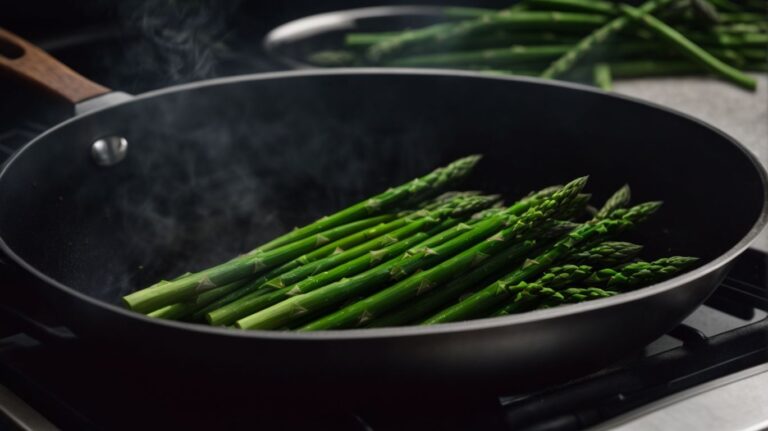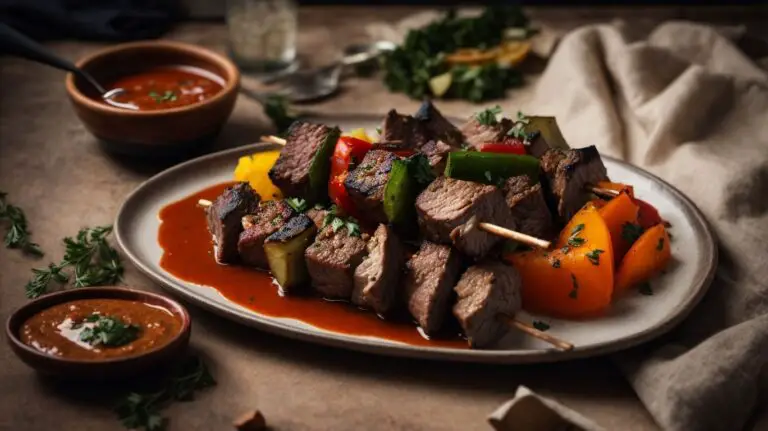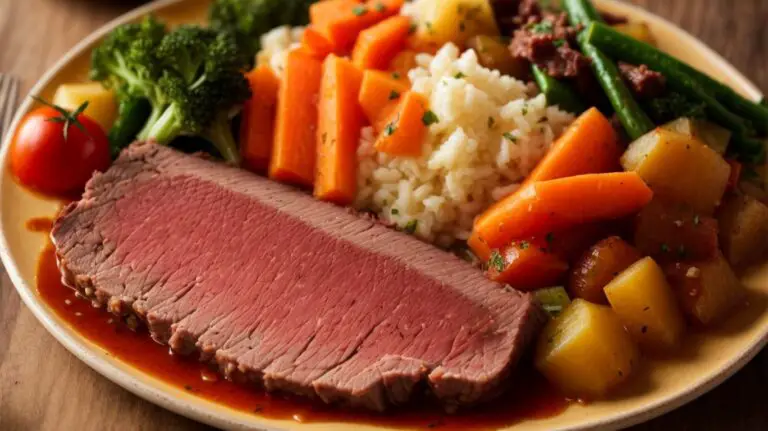How to Cook Nilagang Baboy?
Are you looking to expand your culinary skills and try something new in the kitchen? Look no further than Nilagang Baboy, a traditional Filipino dish that is both hearty and delicious. In this article, we will explore the history of Nilagang Baboy, the ingredients needed to make it, step-by-step preparation instructions, serving and presentation tips, variations of the dish, and even the health benefits it offers. Whether you’re a seasoned chef or a beginner in the kitchen, this article will guide you through how to cook Nilagang Baboy with ease.
Key Takeaways:
What is Nilagang Baboy?
Nilagang Baboy is a classic Filipino pork soup known for its comforting flavors and traditional preparation.
This hearty soup features tender pieces of pork simmered with vegetables like cabbage, corn, and potatoes in a clear, savory broth. The dish is a staple in Filipino households, often enjoyed during family gatherings, celebrations, and cold rainy days. Nilagang Baboy reflects the warmth and generosity of Filipino culture, where food is a central aspect of community and togetherness. Its simple yet delicious recipe represents the country’s culinary tradition of using fresh, local ingredients to create nourishing and satisfying meals.
History of Nilagang Baboy
The history of Nilagang Baboy traces back to traditional Filipino recipes passed down through generations, showcasing the culinary heritage of the Filipino people.
This beloved dish, which translates to ‘boiled pork’, has its origins deeply rooted in the rich tapestry of Filipino culinary traditions. Over time, Nilagang Baboy has evolved from a humble everyday meal prepared in rustic kitchens to a staple dish served during important gatherings and celebrations. It not only reflects the resourcefulness and simplicity ingrained in traditional Filipino cooking but also stands as a testament to the enduring flavors that continue to resonate with today’s diners. The gentle simmering of tender pork, vegetables, and savory broth characterizes this dish, making it both comforting and wholesome.
Ingredients for Nilagang Baboy
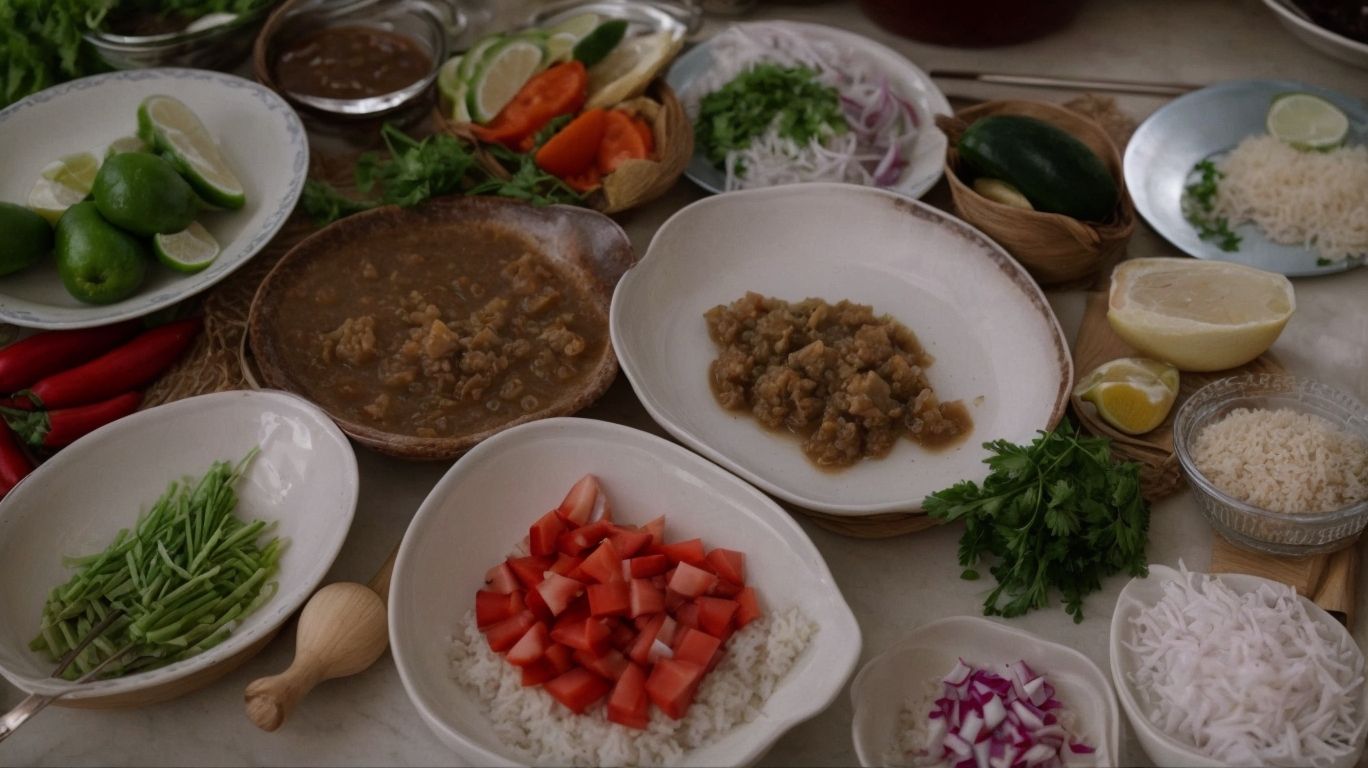
Credits: Poormet.Com – Jack Moore
To prepare Nilagang Baboy, you will need a selection of ingredients including pork, vegetables, fish sauce, and potatoes to create a flavorful and hearty soup.
When making this traditional Filipino recipe, the fresh pork serves as the base of the soup, infusing it with rich flavors and tender texture. Choosing high-quality pork is crucial to achieving the authentic taste that defines this comforting dish. Alongside the pork, a medley of vegetables like cabbage, corn, and green beans add a colorful and nutritious dimension to the soup. The addition of fish sauce, a staple seasoning in Filipino cuisine, provides a savory depth that ties all the ingredients together harmoniously. The inclusion of potatoes not only imparts a satisfying creaminess to the broth but also acts as a natural thickening agent.
Meat
The key component of Nilagang Baboy is the tender pork meat, which can include cuts such as pork ribs, pork shoulder, or pork belly, boiled to perfection for a flavorful broth.
When preparing Nilagang Baboy, the selection of the right pork cuts is crucial for achieving that melt-in-your-mouth tenderness.
- Pork ribs are a popular choice due to the richness they add to the broth and the succulent meat they provide. Their marbling enhances the flavor profile as it simmers in the pot.
- Pork shoulder offers a balance between lean meat and fat, ensuring a juicy and tender result after boiling.
- Pork belly brings a delightful combination of meat and layers of fat, resulting in a luscious texture and rich taste.
Vegetables
Nilagang Baboy features a variety of vegetables such as bok choy, green beans, potatoes, cabbage, and leafy greens, adding color, nutrients, and texture to the soup.
The colorful assortment of vegetables in Nilagang Baboy not only enhances the visual appeal of the dish but also plays a crucial role in elevating its nutritional value. The mix of vibrant green beans, starchy potatoes, crunchy cabbage, and the leafy greens creates a harmonious balance of flavors and textures. Each vegetable brings its unique essence, contributing to the overall rich and savory taste of the soup.
Seasonings and Spices
To elevate the flavors of Nilagang Baboy, seasonings and spices such as fish sauce, onion, garlic, ginger, and scallions are used to create a harmonious blend of tastes.
Among these, fish sauce plays a crucial role in providing that umami depth, while ginger adds a subtle warmth, and garlic enhances the aroma of the broth. The combination of these flavors not only enriches the broth but also complements the tender meat and vegetables simmered in the soup.
In Filipino cuisine, seasonings like patis (fish sauce) are revered for their ability to elevate simple dishes by infusing them with complex, savory undertones. The fragrant sweetness of sautéed garlic and the mild spiciness of ginger balance the richness of the meat, resulting in a comforting and flavorful bowl of Nilagang Baboy.
Preparation of Nilagang Baboy
Mastering the preparation of Nilagang Baboy involves following a step-by-step recipe guide to ensure each ingredient is cooked to perfection and flavors are harmoniously combined.
Gather your fresh ingredients, including tender pork belly, potatoes, cabbage, peppercorns, and fish sauce to capture the authentic flavors of this traditional Filipino dish.
- Next, prepare the pork by cutting it into chunks and boiling it in a pot with water until it becomes tender; this process usually takes around 1-1.5 hours.
- Once the pork is tender, add the potatoes and simmer until they are nearly cooked.
- Then, include the cabbage to add a delightful crunch to the soup.
- Season with fish sauce and peppercorns, allowing the soup to simmer for a few more minutes before serving hot.
Enjoy the warm and comforting flavors of your homemade Nilagang Baboy!
Step-by-Step Guide
Begin by heating a large pot with cooking oil and sautéing onions until fragrant, then add the pork pieces and simmer until scum forms on the surface, skimming it off to achieve a clear broth.
Next, fill the pot with enough water to cover the pork pieces entirely, ensuring that the meat is fully immersed in the liquid for even cooking. Bring the water to a boil over medium heat, then reduce the heat to a gentle simmer to maintain a steady bubbling motion.
- Periodically check the pot and skim off any additional scum that rises to the surface, using a fine mesh skimmer to achieve a clear and flavorful broth.
- After skimming, add in the vegetables like cabbage, potatoes, and peppercorns to infuse the broth with their flavors. Be sure to cut the vegetables into uniform sizes for even cooking.
- Cover the pot and let the Nilagang Baboy simmer until the pork and vegetables are tender, typically around 45 minutes to an hour, depending on the size of the meat pieces.
Tips and Tricks for Cooking Nilagang Baboy
Enhance the flavors of Nilagang Baboy by allowing the soup to cook slowly and infuse the ingredients, adding depth and richness to the broth. You can extend the cooking time for a more developed taste.
For additional tips to elevate the taste profile further, consider incorporating root vegetables like potatoes and carrots midway through cooking. This will contribute a natural sweetness and heartiness to the dish.
To achieve a well-balanced broth, intermittently skim off any impurities that rise to the surface during the simmering process. This will result in a clearer, cleaner, and more appetizing soup.
Serving and Presentation of Nilagang Baboy
When serving Nilagang Baboy, consider garnishing options like fresh green onions or a drizzle of spicy fish sauce to elevate the dish’s visual appeal and taste profile.
You can add a pop of color and freshness to the dish by sprinkling chopped cilantro or parsley on top. This not only enhances the aesthetic presentation but also introduces a subtle herbal note to each spoonful.
- For a touch of heat and complexity, consider adding a few slices of red chili pepper as a garnish. These vibrant peppers not only look visually striking but also offer a spicy kick that complements the savory broth.
- To create a more intricate and appealing presentation, arrange the boiled pork slices neatly in the bowl before ladling the flavorful broth over them. This method not only showcases the ingredients but also makes the dish visually inviting.
Garnishing Options
Top your Nilagang Baboy with freshly chopped green onions for a burst of freshness and a splash of spicy fish sauce for an added kick of flavor.
Alternatively, you can also sprinkle some crispy fried garlic on top of the Nilagang Baboy to add a crunchy texture and a hint of nutty aroma. Another popular garnishing option is adding a drizzle of calamansi juice before serving, which not only enhances the overall taste but also provides a zesty citrusy twist to the dish.
Serving Suggestions
For a fulfilling meal, pair your Nilagang Baboy with steamed white rice to soak up the savory broth and create a comforting dining experience that celebrates Filipino flavors.
Variations of Nilagang Baboy
Explore the diverse variations of Nilagang Baboy that exist across different regions, offering unique twists and alternative ingredient choices to suit varying culinary preferences.
From the traditional hearty Nilagang Baboy simmered with tender pork, potatoes, and cabbage in a clear broth to the spicy Sinigang version with a tangy tamarind base, the spectrum of regional adaptations in the Philippines is extensive. Each variant highlights the rich culinary heritage and diverse palates of different provinces, showcasing the creative ingenuity of Filipino cuisine.
Some innovative cooks incorporate kamias or guava in place of tamarind for a distinct sweet and sour kick, elevating the flavors of the dish. Others experiment with adding leafy greens like kangkong or pechay alongside the classic cabbage, providing a refreshing twist to the traditional recipe.
Regional Variations
Different regions in the Philippines offer their unique take on Nilagang Baboy, infusing diverse flavors and culinary traditions into this beloved traditional dish.
From the delicate balance of sweetness and saltiness in the Visayas version to the robust umami notes prevalent in the Mindanao rendition, each locality puts its distinctive stamp on this hearty soup.
Some areas opt for a broth that is light and clear, allowing the natural flavors of the vegetables and pork to shine through, while others prefer a richer, thicker broth that coats the palate with every savory spoonful.
While some regions stick to the classic combination of cabbage, potatoes, and corn, others incorporate local produce like saba bananas or plantains, adding a tropical twist to the dish.
Alternative Ingredients
Experiment with alternative ingredients like chickpeas or beef broth to create a unique twist on the classic Nilagang Baboy, introducing new flavors and textures to the traditional soup.
Chickpeas, also known as garbanzo beans, can add a hearty and nutty flavor to the dish, elevating its overall profile. By substituting the traditional pork broth with rich beef broth, you can infuse a deeper umami taste, giving the soup a robust and savory essence. These creative substitutes not only bring variety to the table but also offer a whole new culinary experience for those seeking a departure from the usual. Embrace the art of culinary experimentation and transform your bowl of Nilagang Baboy into a tantalizing bowl of chickpea soup.
Health Benefits of Nilagang Baboy
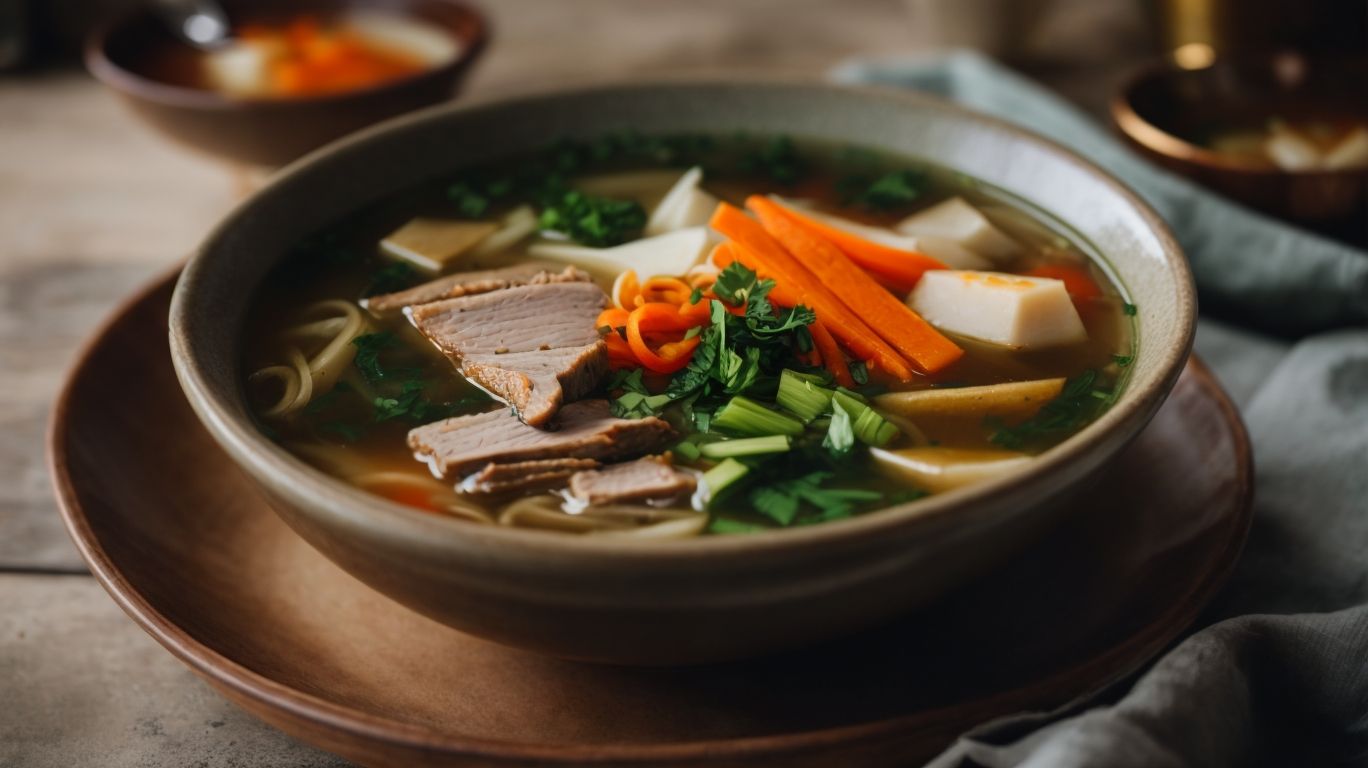
Credits: Poormet.Com – Thomas Carter
Discover the health benefits of Nilagang Baboy, which offers a rich source of essential nutrients, comforting flavors, and a savory broth that nourishes both body and soul.
Nilagang Baboy, a traditional Filipino pork soup, not only satisfies the taste buds but also provides a plethora of nutritional advantages. This hearty dish is packed with protein, vitamins, and minerals, making it a wholesome meal choice. The combination of tender pork, leafy vegetables, and flavorful broth creates a delicious and nourishing culinary experience. The slow cooking process allows the flavors to meld together, enhancing the overall taste and aroma. Enrich your diet with this nutrient-rich and satisfying meal to enjoy its remarkable health benefits.
Nutritional Value
Nilagang Baboy packs a nutritional punch with its blend of pork meat, vegetables, and a clear broth made from boiling ingredients, offering a wholesome and balanced meal option.
The nutritional value of Nilagang Baboy lies in its high-protein pork meat that supports muscle growth and repair. The inclusion of a variety of vegetables like cabbage, potatoes, and corn enriches the dish with essential vitamins, minerals, and dietary fiber, promoting overall health.
The process of boiling the ingredients helps retain their nutrients, creating a flavorful broth that not only enhances the taste but also provides hydration and helps with digestion. This boiled dish is a great choice for individuals looking for a hearty yet healthful meal option.
Benefits for Specific Health Conditions
For individuals seeking savory comfort and nourishment, Nilagang Baboy can offer benefits for specific health conditions by providing a wholesome and satisfying meal option.
This Filipino dish features tender pieces of pork simmered with vegetables in a clear broth seasoned with salt and pepper, making Nilagang Baboy a comforting and hearty meal choice.
Rich in essential nutrients such as protein, vitamins, and minerals, this dish can contribute to a balanced diet and support overall well-being.
For those with digestive issues, the gentle cooking process and simple ingredients of Nilagang Baboy can be easily tolerated and soothing to the stomach, making it suitable for individuals with sensitive digestive systems or recovering from illness.
Conclusion
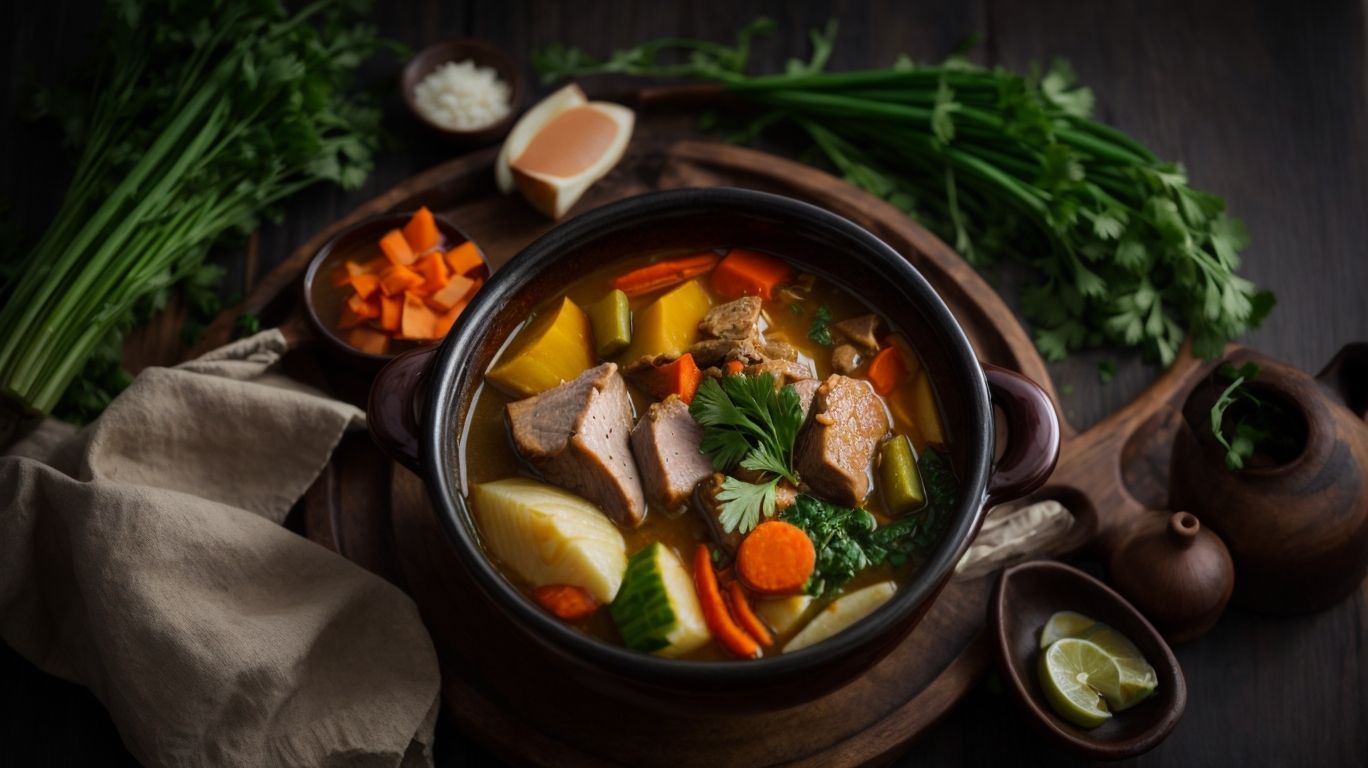
Credits: Poormet.Com – Adam Jackson
Nilagang Baboy stands as a timeless Filipino dish that embodies tradition, comfort, and a symphony of flavors that resonate with both culinary enthusiasts and those seeking a taste of home.
Its cultural significance extends beyond just being a meal; it reflects the deep-rooted traditions and hospitality of Filipino culinary heritage. The tender chunks of pork, hearty vegetables, and savory broth are not just ingredients but ambassadors of comfort and warmth.
With its humble beginnings as a simple boiled pork dish, Nilagang Baboy has evolved into a beloved comfort food option that transcends generations, bringing families and friends together around the dining table.
Frequently Asked Questions
How to Cook Nilagang Baboy using a pressure cooker?
To cook Nilagang Baboy using a pressure cooker, first sauté the onions, garlic, and tomato in the cooker. Then add the pork, potatoes, and water. Close the cooker and cook on high pressure for 30 minutes. Release the pressure naturally and serve with vegetables.
How to Cook Nilagang Baboy with a slow cooker?
To cook Nilagang Baboy using a slow cooker, start by browning the pork in a pan. Then transfer it to the slow cooker and add the rest of the ingredients. Cook on low for 6-8 hours or on high for 3-4 hours. Serve with steamed rice and vegetables.
How to Cook Nilagang Baboy without using a meat tenderizer?
To cook Nilagang Baboy without using a meat tenderizer, choose a cut of pork that is already tender, such as pork loin or pork belly. These cuts don’t require tenderizing and will still cook well in the soup.
How to Cook Nilagang Baboy for a large group?
To cook Nilagang Baboy for a large group, use a large pot and adjust the ingredients accordingly. You can also use a slow cooker or pressure cooker to make it easier. Serve the soup in a large bowl and let everyone serve themselves.
How to Cook Nilagang Baboy with a twist?
To cook Nilagang Baboy with a twist, you can add other ingredients such as corn, bok choy, or cabbage to the soup. You can also use different types of meat like beef or chicken. Experiment with different flavors and find your own unique twist on this classic Filipino dish.
How to cook Nilagang Baboy to make it healthier?
To cook Nilagang Baboy to make it healthier, use lean cuts of pork and remove excess fat before cooking. You can also add more vegetables and use low-sodium broth to reduce the salt content. Serve with brown rice instead of white rice for a healthier option.


